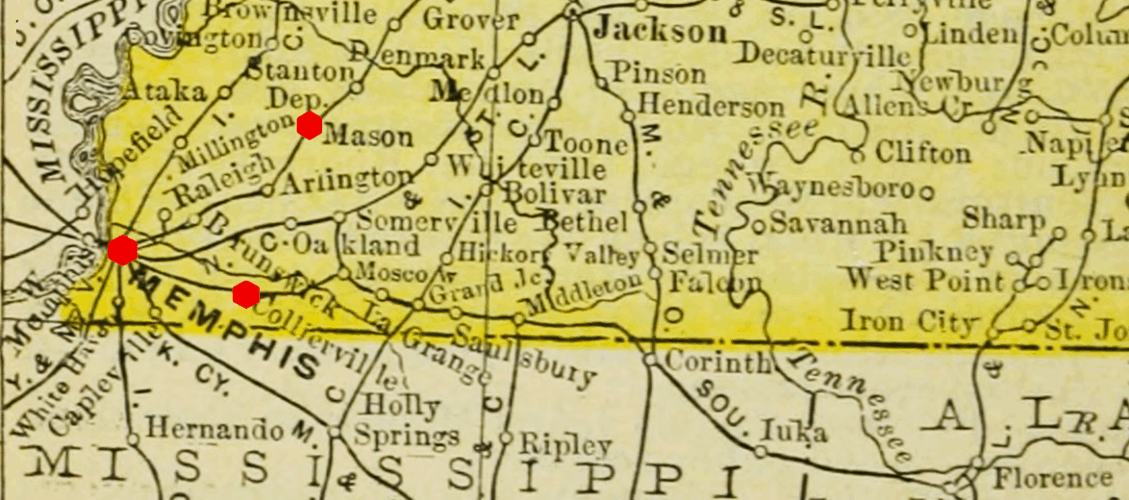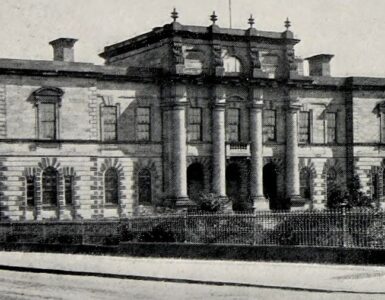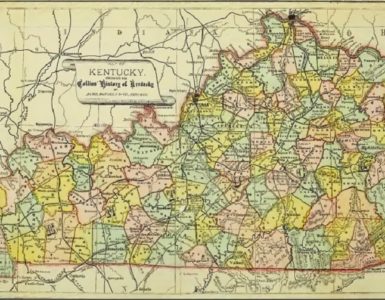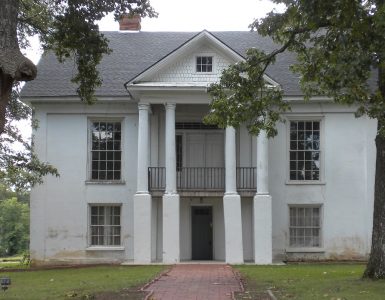 John Holt was born July 23, 1818 in Petersburg, Virginia, the first son of Martha Alexander and Benjamin Holt Rice. At the time his father was pastor of the recently organized Tabb Street Presbyterian Church. His mother was the younger sister of the founding professor of Princeton Seminary, Archibald Alexander. The Holts named their son for his uncle John Holt Rice. John’s studies were provided by Mount Pleasant Institute in Amherst, Massachusetts under the direction of Francis Fellows and Chauncey Colton, then he continued studies in the Washington Institute in New York as mastered by J. D. Wickham. Following completion of his undergraduate work in the College of New Jersey (Princeton University) and then law studies with attorney John S. Hart in 1841, he moved to Richmond, Virginia to practice law. On the Lord’s Day he attended First Presbyterian Church, which was served by senior pastor William Swan Plumer and assistant minister Moses D. Hoge. The expositions of the Word of God at First convicted John of his sin and illumined his understanding to the grace of Christ resulting in his profession of faith. It is not clear when he felt called to the ministry, but he entered Princeton Seminary in the fall of 1842 and completed the curriculum in 1845.
John Holt was born July 23, 1818 in Petersburg, Virginia, the first son of Martha Alexander and Benjamin Holt Rice. At the time his father was pastor of the recently organized Tabb Street Presbyterian Church. His mother was the younger sister of the founding professor of Princeton Seminary, Archibald Alexander. The Holts named their son for his uncle John Holt Rice. John’s studies were provided by Mount Pleasant Institute in Amherst, Massachusetts under the direction of Francis Fellows and Chauncey Colton, then he continued studies in the Washington Institute in New York as mastered by J. D. Wickham. Following completion of his undergraduate work in the College of New Jersey (Princeton University) and then law studies with attorney John S. Hart in 1841, he moved to Richmond, Virginia to practice law. On the Lord’s Day he attended First Presbyterian Church, which was served by senior pastor William Swan Plumer and assistant minister Moses D. Hoge. The expositions of the Word of God at First convicted John of his sin and illumined his understanding to the grace of Christ resulting in his profession of faith. It is not clear when he felt called to the ministry, but he entered Princeton Seminary in the fall of 1842 and completed the curriculum in 1845.
Rice’s father had been pastor of First Church, Princeton for over twenty years when John was licensed by New Brunswick Presbytery, April 23, 1845, to test his gifts for ministry. After a year under his father’s direction, he moved to New Orleans to work among the poor as a city missionary before accepting a call to become pastor of the First Presbyterian Church, Tallahassee, Florida. He was ordained and installed in First Church on April 23, 1845 by the Presbytery of Florida. During this call he married Lizzie Bogart Neil on October 24, 1849. Lizzie was the daughter of William Neil who was stated supply for the church in Iamonia near the state line north of Tallahassee. For his next call, Rice returned to Virginia to serve the village church at Charlotte Court House until 1855, which was followed by a brief term as an agent for the Old School Presbyterian Board of Publication in Kentucky and Tennessee. Louisville was the next relocation for the Rice family so he could pastor the Walnut Street Church 1856-1861, before moving south to serve the Lake Providence church in Louisiana in conjunction with the Brandon and Vicksburg churches in Mississippi, 1861-1865 (a fairly large circuit for the era’s transportation). During the Civil War Old School Presbyterians in the South were in the Presbyterian Church in the Confederate States of America, but when the war ended the name was changed to the Presbyterian Church in the United States. Serving in the PCUS, Rice moved to Mobile, Alabama to become pastor of Third Church, 1865-1868, and he published the Presbyterian Index, 1866-1868. The Index was an attempt to provide a Presbyterian newspaper in the old southwest, but many potential subscribers already read the Central Presbyterian published in Virginia and they saw no need for the regional serial. The publisher of the Central Presbyterian even ran an advertisement encouraging its readers in the old southwest to subscribe to Index, but to no avail. It was a good idea that might have worked ten or so years later as the regional population increased. His pastoral work came to an end after another relocation to serve as stated supply in Franklin, Tennessee, 1869-1874, then in the same capacity at Mason, 1874-1876, and his last service was very brief as an evangelist for the Presbytery of Memphis working with the poor. The many relocations combined with brief pastoral calls and several tenures as stated supply show that Rice had a difficult time in the ministry, but his story is not uncommon because other ministers had similar struggles with calls.
August 23, 1878, John Holt Rice responded to a letter from William E. Schenck in which he asked Rice why he did not fill out and return the Princeton Seminary biographical questionnaire he sent. Schenck was responsible for collecting information from alumni to publish a biographical catalog. Rice addressed Schenck as his “dear brother and old friend,” as he mentioned their times at the seminary. He said he had not returned the form because he believed,
it was of no consequence to anybody in the world that my name should be in your catalogue, and I did not believe that anyone would be interested in the few facts that might be stated with reference to my ministerial life.
Schenck’s letter mentioned that all seminarians were to be included in the catalog. Rice had saved the form, so he filled it out and included it with his letter to Schenck. His letter is written on nearly seven full sides of stationery and it includes recollections of the varied ministerial works he had done over the years along with some personal information. He was unable to provide many dates and other material because when he served the Walnut Street Church his books and records were confiscated by the United States District Court. He commented “under what law this was done I have never been able to discover.” The tone of the letter as Rice related events and locations to Schenck was indicative of his disconsolate condition. His recollections presented the picture of a life and ministry that had been varied, difficult, and often short on funds with all his memories having their focus sharpened by his recent sixtieth birthday reminding him of what had been, and possibly, what might have been. Maybe he suffered from what the Victorians called melancholia, but would currently be called depression or anxiety.
Dr. Rice preached the Word twice in Collierville, Tennessee, Sunday, September 1, 1878, contracted yellow fever on Wednesday, and then died of the horrendous disease on Saturday, September 7, 1878, in his home in Mason. Yellow fever deaths started in Memphis in mid August. Lizzie was the only one to attend to him while his condition degraded quickly and he passed away. William Schenck had written a response to Rice’s sad letter the same day Rice died. Surely, Schenck composed for his old classmate some words of encouragement that Rice would have welcomed. Because of the yellow fever there was no one willing to take his body to the cemetery, so John Holt Rice was buried in the backyard of his home under the shade of a tree after Lizzie and a friend prepared his body for burial. Lizzie’s father led the family, a handful of friends, and pallbearers in prayer. By the time the yellow fever plague ended it had caused over 5,000 deaths.
Whatever the reasons for Pastor Rice’s difficulties over the years, his life is a reminder that ministers sometimes serve with not only the responsibilities of their congregations and families but also bearing other concerns and fears. Whether Rice’s varied ministerial data sheet could be attributed to interpersonal reasons, distractions from extended family and friends, or other circumstances, he was faithful to the end as indicated by his preaching the Lord’s Day before his passing. Leading worship in Collierville may very well have exposed him to yellow fever and ended his life given the three to six days incubation for the disease.
John and Lizzie had nine children, of which six were alive at the time of his death, two boys and four girls. The boys were named John Holt and Douglas Neil. A reliable source for the girls’ names was not located. Rice was honored with the Doctor of Divinity by Centre College in Kentucky, 1860, and he published two articles in the Southern Presbyterian Review, “The Princeton Review on the State of the Country,” 14:1, April 1861, and “The Science of Pastoral Theology,” 17:3, Nov. 1866.
One final thought is provided by Thomas More (1779-1852) in his hymn, “Come, Ye Disconsolate Where’er Ye Languish,” published in 1816 (red Trinity, p. 615),
Come, ye disconsolate, where’er ye languish,
Come to the mercy seat, fervently kneel:
Here bring your wounded hearts, here tell your anguish;
Earth has no sorrows that heav’n cannot heal.
Joy of the comfortless, light of the straying,
Hope of the penitent, fadeless and pure!
Here speaks the Comforter, in mercy saying,
“Earth has no sorrows that heav’n cannot cure.”
Barry Waugh
Notes—According to the Centers for Disease Control and Prevention, the incubation period for yellow fever is three to six days. The portrait of Rice was provided by Wayne Sparkman of the PCA Historical Center in St. Louis; Rice’s age at the time the photograph was taken is not known. The entry for 1878 in the Princeton Seminary Necrological Reports provided most of the information used. The book on Internet Archive, A History of the Yellow Fever: The Yellow Fever Epidemic of 1878, in Memphis, Tenn., Memphis: Printed for the Howard Association, 1879, provides considerable information about the epidemic and an extensive chronology of yellow fever events in the United States. The online Tennessee Encyclopedia posted by the Tennessee Historical Society has an article about the epidemics in Tennessee, “Yellow Fever Epidemics.” Copies of the letter to Schenck and other ephemera were provided by Ken Henke of Special Collections, Princeton Theological Seminary in 2018. The biography of George D. Armstrong, 1813-1899, on Presbyterians of the Past tells about his experience with yellow fever in Norfolk, Virginia, 1855. The map section is from the map of Tennessee in Rand, McNally & Co.’s Pocket Atlas of the World, 1906, on Internet Archive; the three dots mark Memphis, Mason, and Collierville, Tennessee. Regarding Presbyterians in the old southwest, see Walter B. Posey, The Presbyterian Church in the Old Southwest: The story of an uncompromising faith amid the crude and rugged life of the new frontier across the Appalachians, Richmond: John Knox Press, 1952. Also referred to for information was James R. Bullock and Jerrold L. Brooks, Heritage and Hope: A Story of Presbyterians in Florida¸ Orlando: Synod of Florida, [1987].





